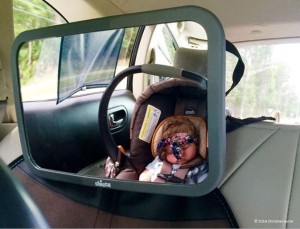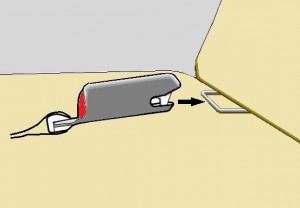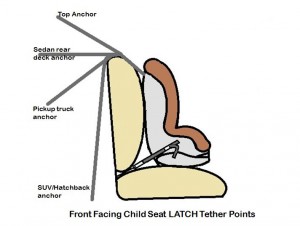Category Archive: Children and Cars
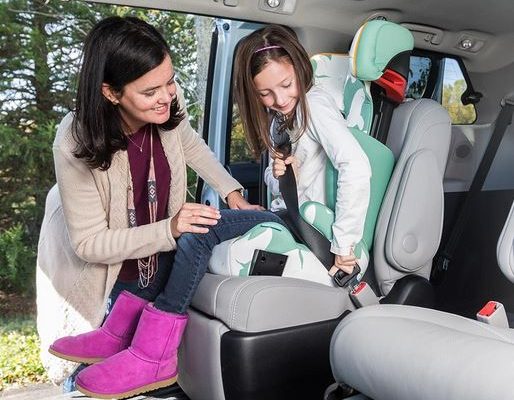
IIHS: List Of Top Child Booster Seats for 2016
November 18, 2016
If you’re a parent whose child is ready to graduate to a booster seat or a grandparent looking for the perfect Christmas gift to ensure your grandchild’s safety, the Insurance Institute for Highway Safety (IIHS) has come out with a new list of the top booster seats just in time for the Christmas shopping season
It seems that manufacturers have gotten the hint and, compared to only 25% of the seats getting a good rating in 2008, this year, 48 out of 53 new models got a best bet rating. A best bet rating means they are likely to provide good belt fit for a four to eight year old child in almost any car, minivan, or SUV.
Out of the 53 seat models tested, three seats are rated “Check Fit” meaning they may not provide the best belt fit in all makes of vehicles. Two seats, the Cosco Easy Elite and the Cosco Highback 2-in-1 DX — both made by Dorel — were rated “Not Recommended.”
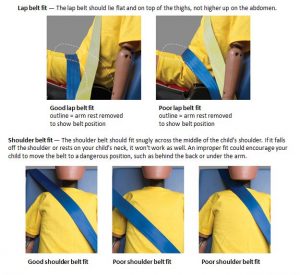
Click on image to enlarge
Parents should remember that, in spite of some state laws, booster seats are recommended for children once they outgrow their child seat, at approximately age four, until they’re big enough for a seat belt to fit properly, low on their hips, without riding up over their abdomen. For the average child that can be anywhere from nine to twelve years of age.
Another thing to remember is that child seats have an expiration date. Sunshine and trapped heat inside a car over long periods of time can degrade the plastics and synthetic fabrics used in the seat structure and belts. If you’re considering using a hand-me-down seat, you’ll want to check the expiration date located underneath the seat.
For more information, visit: Designs that click – Booster manufacturers have mastered good belt fit
Images courtesy: Insurance Institute for Highway Safety
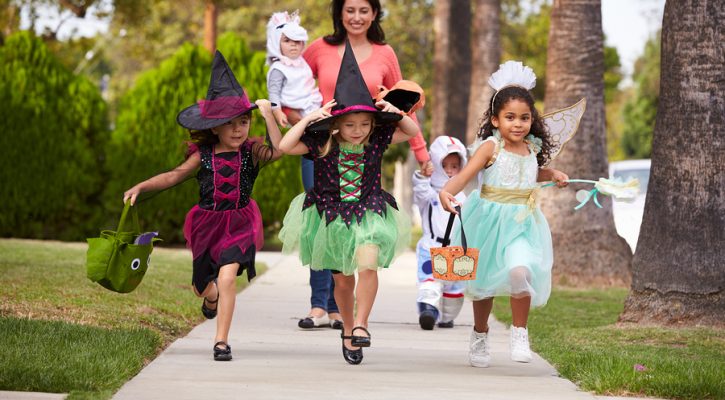
Holiday Driving: Halloween Safety Tips
October 28, 2016
The chill is in the air, orange is the dominant color and kids are beginning to think of their plans for Halloween. Before you go out shopping for costumes and buying bags of candy this year, consider a few safety tips and spend a few minutes planning for the night ahead.
- Identify what type of celebrations will be taking place and where they will be located. Not only will it help determine your plans, it will help you be an aware driver as you travel on the roadways. If you’re attending a party, plan for a designated driver or commit to not drinking. Even small amounts of alcohol can impair your judgment and driving. Driving under the influence can kill or cause trauma, be expensive and embarrassing.
- When costume planning, make sure that all costumes fit appropriately and won’t restrict movement or visibility, either as a pedestrian or behind the wheel. Ensure foot wear is sturdy. Tripping, falling, difficulty steering or braking can be dangerous!
- Add reflective tape to costumes and replace flash light batteries to ensure you will be visible, whether escorting trick or treaters or attending an event yourself. Make sure that any children you’re with have flashlights, glow stick, bright candy bags, and reflective tape on costumes as well. Clear up any yard obstructions, water hoses, and overgrown vegetation to make it easier to see and maneuver for both pedestrians and vehicles.
- Know your planned route, to avoid the unexpected. Plan to travel in well lighted areas. If walking, use sidewalks and crosswalks. If driving, avoid areas of heavy pedestrian traffic and park in areas with the greatest visibility. Select alternate routes that will provide the least amount of risk and the most amount of safety. Arrange to give yourself extra time to and from your destination.
- Know what night of the week Halloween falls on. If Halloween is on a weekend, expect the festivities to begin early in the day and prepare to be a defensive driver. If it is on a weeknight, children will be starting their rounds before the evening rush hour is over. Be especially watchful and, if you can, avoid driving on Halloween altogether.
- Be alert for kids playing in costumes during the day, darting from house to house or in between parked cars. Pay special attention beginning at 4:30pm for the younger treat seekers. Turn on your head lights to make your vehicle more visible. Dusk is the most dangerous time of day because lights and shadows can fool you so drivers need to be especially vigilant.
- Reduce distractions. Make sure your cell phone is on silent, your radio volume is low and your passengers are aware to minimize distractions and assist with being alert to the surrounding environment.
- Be extra cautious as you pull into and leave driveways, parking lots and alleys. Watch for children who may dart out between cars, at roadways, medians and on curves. Be sure to check your blind spots thoroughly and maintain a search and scan of the driving environment every few seconds.
- Travel well below the posted speed limit. Be extra patient with pedestrians and other vehicles and always be prepared to stop at a given moment. Other drivers may be distracted by the trick or treaters inside their vehicle and may not see you. Avoid passing or going around stopped vehicles. They may have passengers entering and exiting hurriedly and carelessly.
Halloween can truly be a fun night full of great memories! Take a few steps to keep it safe and trouble free.
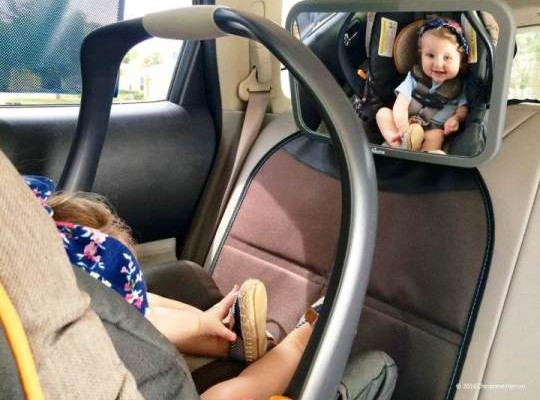
Baby Mirror: Safe Or Distracting?
May 17, 2016
A baby mirror to monitor the baby in the back seat of the car has become a popular gift at baby showers over the last few years and for good reason. The safest place for a baby in a car is securely fastened into a rear-facing infant seat mounted in the rear seat of the vehicle. That makes it difficult for the parents to see the child so, a forward facing baby mirror mounted over the infant safety seat is the best compromise. However, the question comes up, is a baby mirror a good safety tool or just another distraction added to all the other distractions that make driving so dangerous today? The answer is; it all depends on how it’s used by the driver.
Distraction:
Parents of a newborn baby love watching this incredible miracle that they’ve created but you can watch too much. If a driver is tempted to watch for the baby’s reaction while talking to her, he or she can take too much time from the critically important job of keeping his or her eyes on the road.
Studies have shown that most traffic crashes happen within three seconds of a driver distraction. If you take your eyes off the road to look at your baby for just two seconds while driving at 45 mph, your vehicle will travel over 130 feet. A lot can happen in that time and distance. If an emergency should happen in that space, it’ll take, on average, an additional 84 feet to bring your car to a stop. Good thing you have a good, safe baby seat.
To protect that precious bundle of joy, the driver needs to keep his or her eyes on the road at all times. Give the baby the same amount of attention that you would give to other vehicles in your rearview mirror. Just a quick glance every 10 to 15 seconds just to make sure everything’s OK. Make sure that your rearview mirror is positioned on the road behind and not aimed mostly at the baby mirror.
Safety Tool:
As long as you’re not allowing the baby mirror to be a distraction, it can be an excellent safety tool.
Babies are constantly exploring and learning new things. One thing they tend to learn, as early as 12 months, is that they’re capable of unbuckling their seat harness and crawling out of their child seat. One study showed that 75% of children who discover they can unbuckle their seatbelt were ages three and under. Once they make this miraculous discovery, it can be very hard to keep them buckled up. Checking to ensure that your child is safely buckled in is one of the best reasons for investing in a baby mirror. If your child is getting out of his or her seat, don’t panic and never try to deal with it from the driver’s seat while the car is in motion. Pull as far off the side of the road as possible, then get out and deal with the situation.
Remember that the safest place to interact with your child is at home. While you’re driving, pay attention to the road so that you can both get home safely.
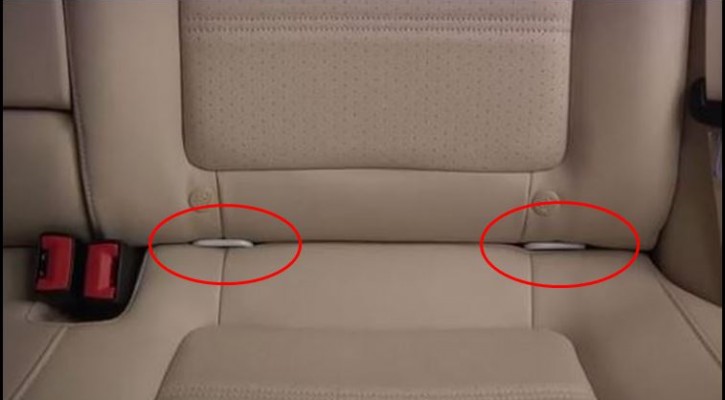
The Best Kept Secret That Could Protect Your Baby
May 12, 2016
Most parents of a newborn child would do anything they could to protect that child from harm but there’s one critically important safety device that seems to be a well kept secret for most new parents.
In 2014, the American Academy of Pediatrics conducted a study of new parents who were taking their newborn child home from the hospital. The study showed that 93 percent of new parents made at least one critical error in placing or attaching their infant car seat for the first time.
Most new parents seem to know about using the seat belt to secure an infant car seat but, it seems that very few know about or use their vehicle’s LATCH (Lower Anchors and Tethers for Children) system. The LATCH system has been required on all infant child seats and motor vehicles manufactured after September 1, 2002. While the LATCH system may be there, it’s often difficult for parents to find and use.
The LATCH system consists of tether points (as in the photo above) located both on the seat itself and, for forward facing child seats, behind the rear seat. Latches built into the infant seat or seat base are designed to hook onto the anchor points located between the seat cushions.
These tethers, once they are latched and tightened, are extremely effective in holding the child seat securely in place during a crash.
When your child is old enough for a front-facing child protective seat, there’s an additional tether to prevent the top of the seat from flying forward in a crash. The point that it tethers to depends on the type of vehicle you have.
Follow the directions that came with your child seat when attaching the LATCH points. If the child seat user’s manual is unavailable, you can generally find a user’s manual online at the child seat manufacturer’s website.
If you’re still unsure about how to correctly install your child seat, you can contact the local child seat inspection station where a trained child seat inspector can show you how to correctly install the seat.
Always place your baby’s child seat in the rear seat but keep in mind that, in certain crashes, the front seat can break, fall back and possibly injure the child seated behind. If possible, always place the child seat behind an empty front seat or behind the lightest front seat passenger.
Another thing that seems to be a secret is that car seats have expiration dates. Plastic seat components exposed to the sun and heat in the interior of a car over long periods can start to break down and weaken. The expiration date is marked on the bottom of the seat. If a previously used seat is near or past its expiration date, dispose of it. Don’t be tempted to sell it at a garage sale where it could endanger another child.
If you’re in the market for a new car, the Insurance Institute for Highway Safety (IIHS) has information on the safest cars and those cars with the easiest to use LATCH systems.
Be sure to register your new car seat in case problems arise that require a recall. To check whether or not your car seat has been recalled, visit: Get Car Seat Recall Notices
For the sake of your child, and others, don’t let the proper use of child seat systems remain a secret; spread the word. For more information visit: Lower Anchors and Tethers for Children (LATCH) Restraint System
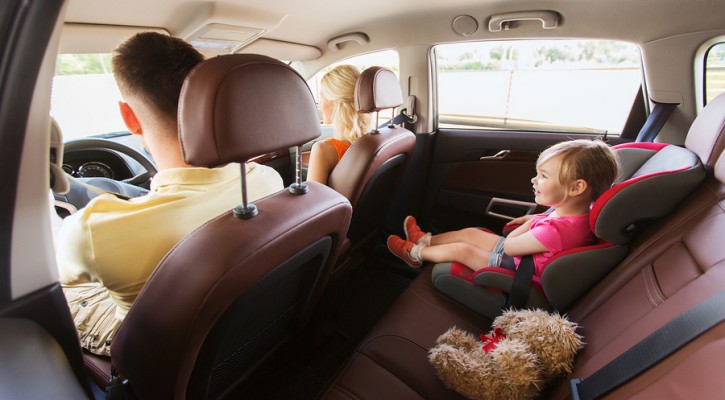
Collapsing Front Seats Pose Danger To Children In Back Seat
March 28, 2016
A recent FairWarning.org article points out that collapsing front seats can pose a serious danger to children in the back seat. While the National Highway Transportation Safety Administration (NHTSA) knows about the issue, they say there’s too little data to initiate any sort of mandate from the federal government to fix the problem.
The problem comes when cars are struck from behind. As the car is suddenly pushed forward, the front seats can collapse and fall backwards. If that should happen, children riding in the back seat can be severely injured when they are struck by the front seat headrest, the seat itself, or by the occupant of the front seat. According to the article, some seats have been known to collapse in a 30 mph crash.
The Insurance Institute for Highway Safety (IIHS) tests seats as part of their crash test regimen for new cars and, in fact, they remove the seats and test them on a sled separately from the car itself. However, the tests concentrate more on how much support the front seat and headrest will provide for its occupant to prevent whiplash and back injuries and not so much on the ability of the seat to remain upright in a higher impact crash.
Parents who are looking for a new car can check the IIHS crash ratings for a particular model and it will show how well the seats performed in rear end crash tests but it’s important to remember that those tests are conducted to simulate a 20 mph crash and that may not indicate how well the seat will perform in a higher speed impact. You can see an example of the seat test here.
For years, NHTSA has advised that because of the dangers posed by airbags to small children, children should be seated in the back seat. According to FairWarning, that advice doesn’t go far enough. They advise that children be placed in the back seat behind an unoccupied front seat or behind the seat with the occupant that weighs less (as in the photo above).
This video shows what can happen in a crash where the front seat collapses and falls back:
For more information, visit: Regulators, Automakers Urged to Warn Parents About Flawed Seats

